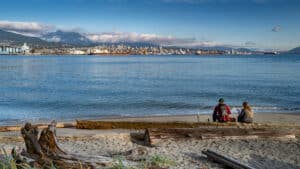
Sightings of Bigg’s killer whales, also known as Transient killer whales, have soared this year in the Salish Sea, but observers are unsure if there are more animals in that orca population or if animals from elsewhere are attracted to the region by abundant food.
In July alone, groups of Bigg’s whales were sighted 214 times, “a 70% increase over the 124 unique sightings we had in July 2023,” said Monika Wieland Shields, director of the Orca Behavior Institute.
The institute is a research group that compiles whale reports from professional whale watchers, regional sightings groups, and community scientists throughout Washington and British Columbia.
Lance Barrett-Lennard, a research scientist with the Raincoast Conservation Foundation, said that the concentration of Bigg’s orcas in the Salish Sea may result from the abundance of harbour seals and other mammals. “We’re seeing this shift because this is a particularly good place for their prey right now,” he told CBC. “I see fewer harbour seals in [central parts of the BC coast] than I used to.”

Bigg’s hunt mammals and are one of four distinct populations of orcas living off BC’s coast. Although called killer whales, they’re actually the world’s largest species of toothed dolphin.
Scientists say the population of Bigg’s is stable or growing. That’s a big contrast to BC’s resident orcas, who only eat salmon. Southern Resident Killer Whales are widely considered on the verge of extinction, while Northern Resident Killer Whales are also at risk. The fourth population, offshore killer whales, has not been extensively studied, but they are thought to hunt mostly large fish and sharks far offshore. Read the statement from the Pacific Whale Watch Association and Orca Behavior Institute here. A CBC story on the increase in sightings is here. For more information on BC’s orcas, read the Strong Coast Explainer here.




